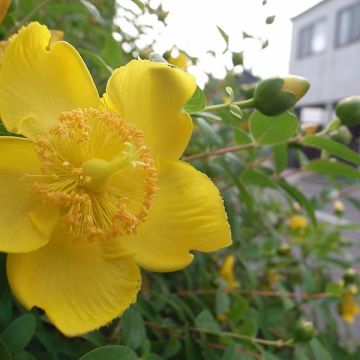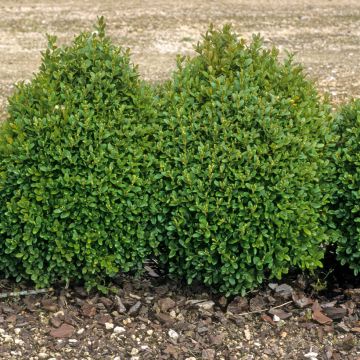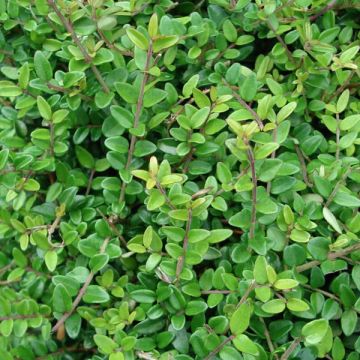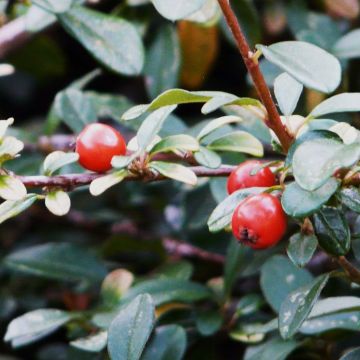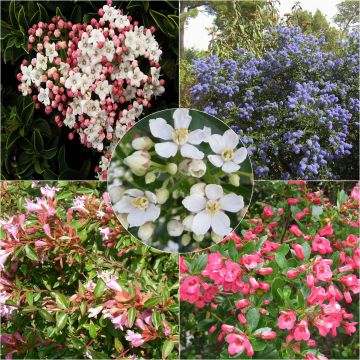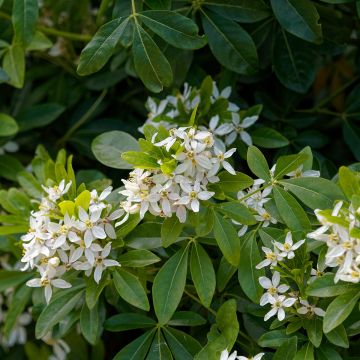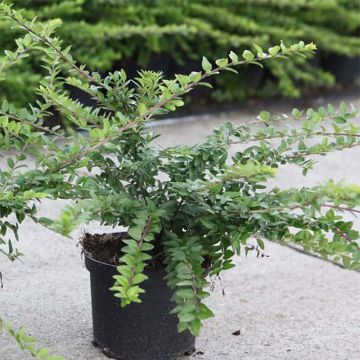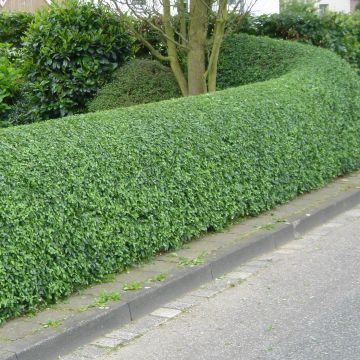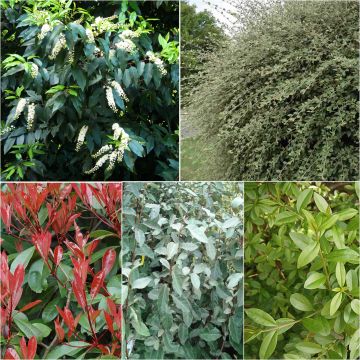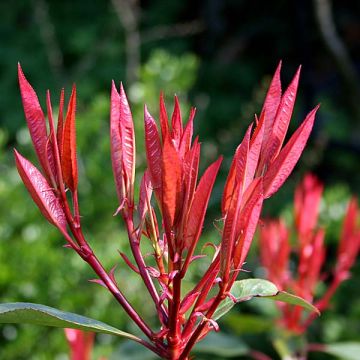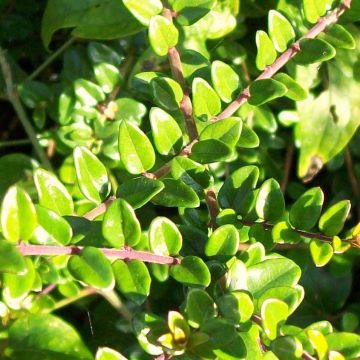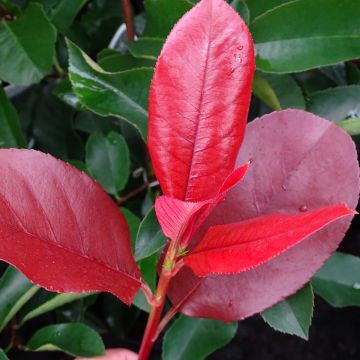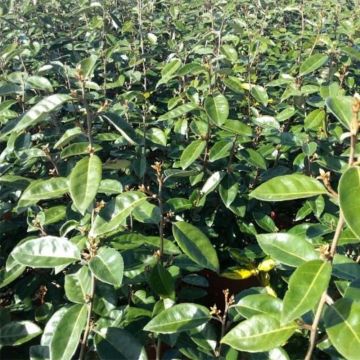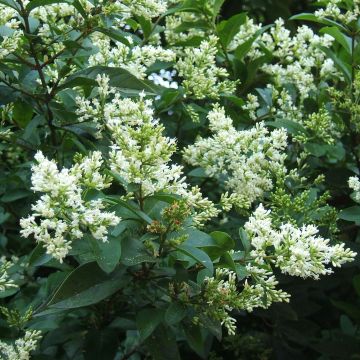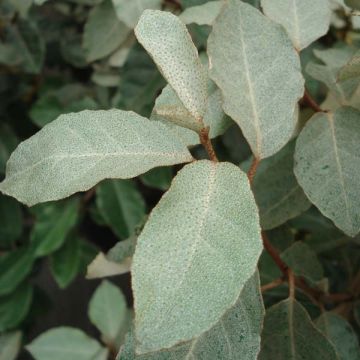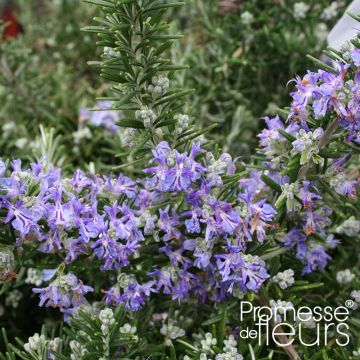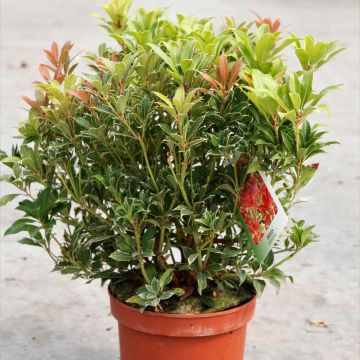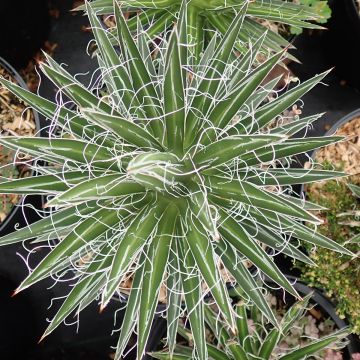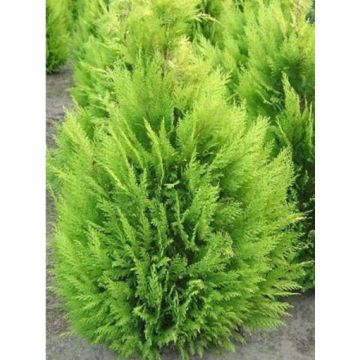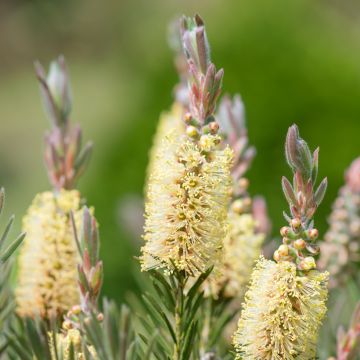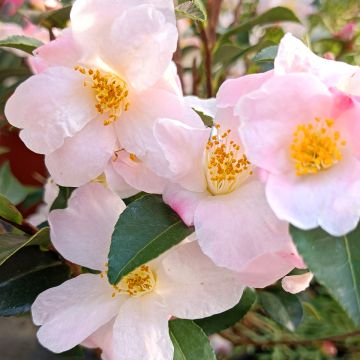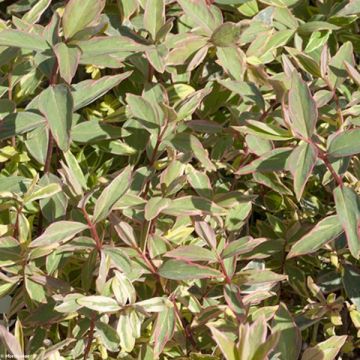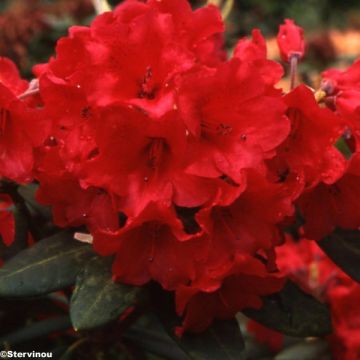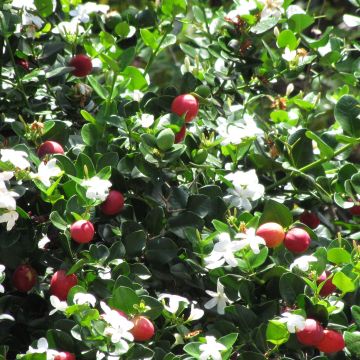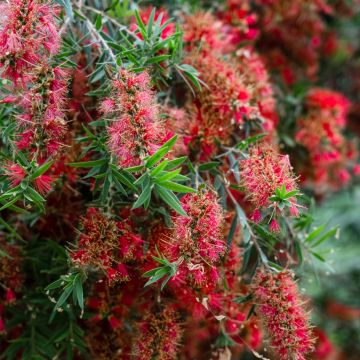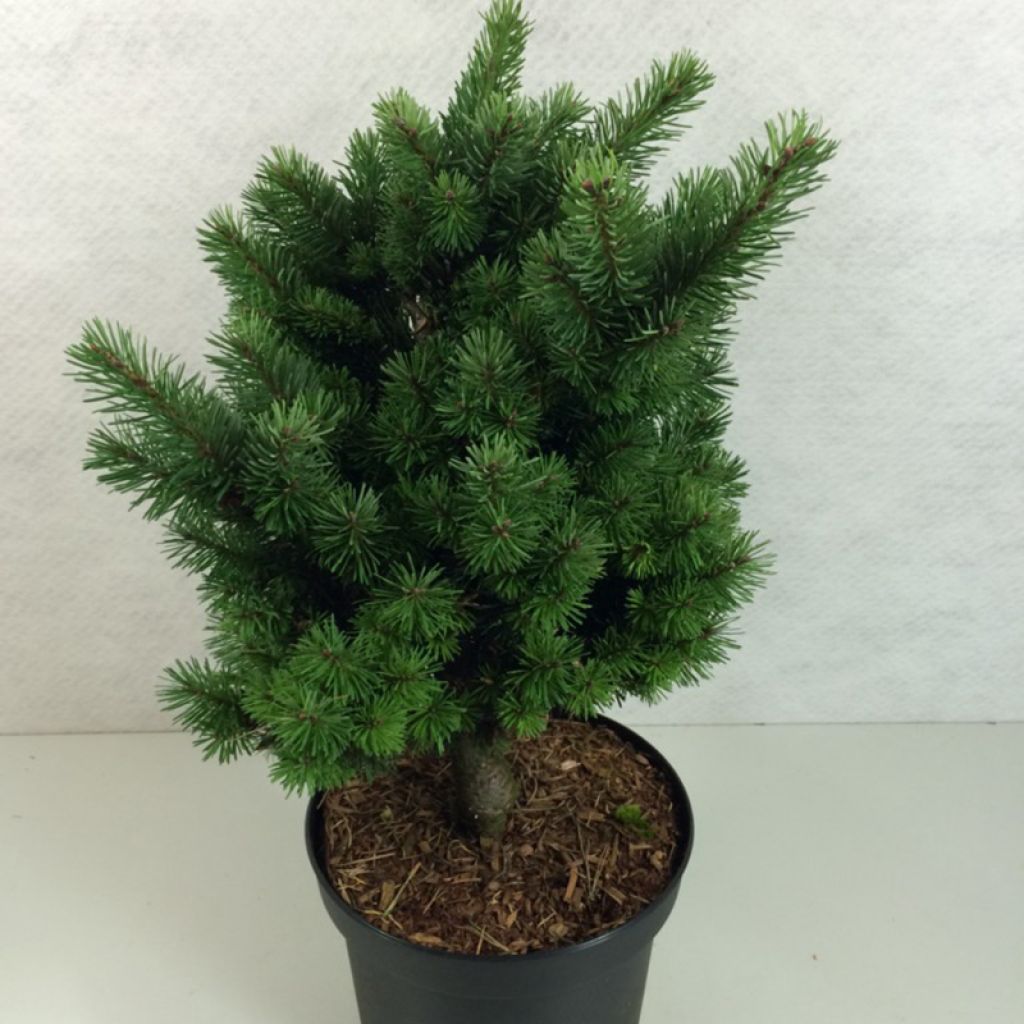

Pseudotsuga menziesii Pannenhoef - Douglas Fir
Pseudotsuga menziesii Pannenhoef - Douglas Fir
Pseudotsuga menziesii Pannenhoef
Douglas Fir, Oregon Pine, Green Douglas Fir, Douglas Spruce
Why not try an alternative variety in stock?
View all →This plant carries a 24 months recovery warranty
More information
We guarantee the quality of our plants for a full growing cycle, and will replace at our expense any plant that fails to recover under normal climatic and planting conditions.
From €5.90 for pickup delivery and €6.90 for home delivery
Express home delivery from €8.90.
Does this plant fit my garden?
Set up your Plantfit profile →
Description
Pseudotsuga menziesii 'Pannenhoef' is a dwarf Douglas fir, with a very compact, upright and irregular habit. While young, it forms a very dense small pyramid, with several unequal branches, and develops over the years into a wide rounded crown carried by a very short trunk. Its bushy, feathery appearance, greyish-green with bluish highlights in spring, is adorned with pretty creamy and pointed buds in winter. This variety with its twisted appearance will be enhanced on the terrace, as a solitary specimen, or in a large rockery. It is a hardy plant, with slow growth, that thrives in sunny, light, well-drained, humus-rich soil.
Pseudotsuga menziesii, commonly called Douglas fir or Oregon pine, is a conifer of the pine family, native to North America. An adult specimen (which can live between 400 and 500 years) reaches a height of 50 to 80 m (164 to 262ft) in its native regions. The Douglas fir shows rapid growth, which has encouraged massive planting in Europe for reforestation. It is a species that prefers cool and moist climates, and appreciates moist and light soils. Its heartwood is durable and widely used in construction.
The 'Pannenhoef' variety is a dwarf form of great ornamental value, derived from this species. It is distinguished by its slow growth, irregular habit, and the beautiful grey-green colour of its foliage. Its growth is slow so that it will only reach a height of 2.5 m (8ft), and 1.5 m (3ft) in spread at 10 years old. After several years, it can reach a height of up to 3 m (10ft) with a diameter of 2.5 m (8ft) depending on pruning. Its branches are initially ascending, then more horizontal with age, covered with needles 10 to 20 mm (1in) long, quite thick, soft, flexible, curved, pointed, and narrowed at the base, initially bluish and then grey-green, with a lighter underside. They are inserted all around the twigs, in a brush-like arrangement and give off a lemony scent when crushed. This plant has a well-developed root system, which makes the transplantation of large specimens somewhat delicate, but allows it to draw deeply from the soil's nutrient resources.
The Oregon pine 'Pannenhoef' is full of surprises, with a somewhat unpredictable habit, but easy to grow in cool climates. It will enhance a large rockery or any border. It will find its place in all gardens, even the smallest ones. It requires little or no maintenance and goes well with large stones, the geometric lines of swimming pools, and masonry. It can be associated with complementary grasses or dwarf conifers with a prostrate, round, or columnar shape to play with the aesthetics of shapes, silhouettes, and textures. Conifers with their reassuring permanence can structurally enhance a border, mark pathways and border terraces, easily replacing the strong presence of trimmed boxwood or holly. The key is to play with volumes and colours.
Report an error about the product description
Pseudotsuga menziesii Pannenhoef - Douglas Fir in pictures
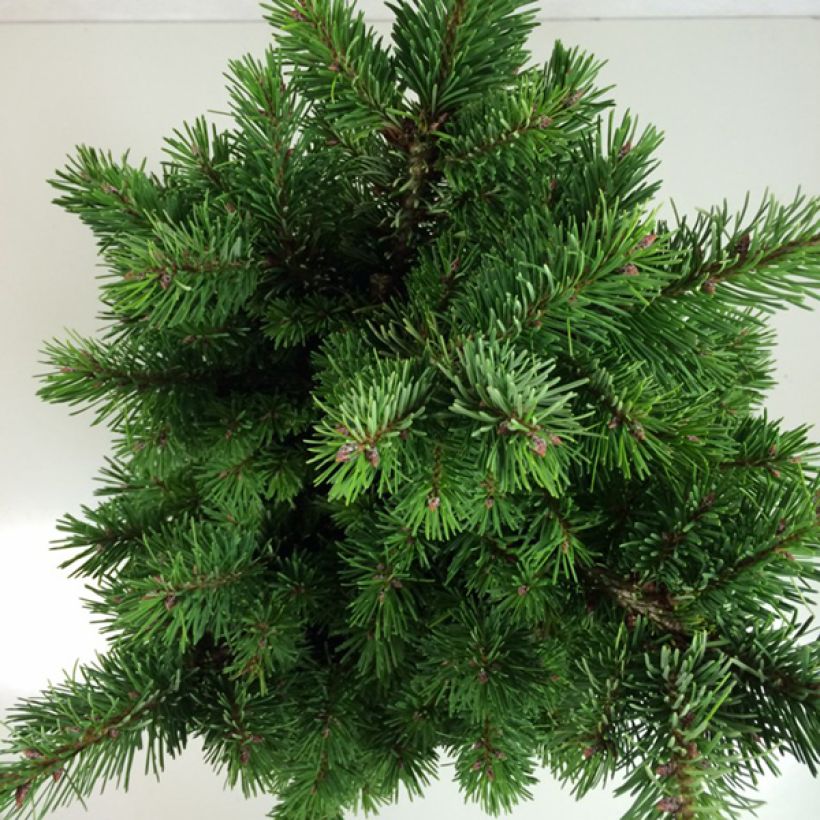

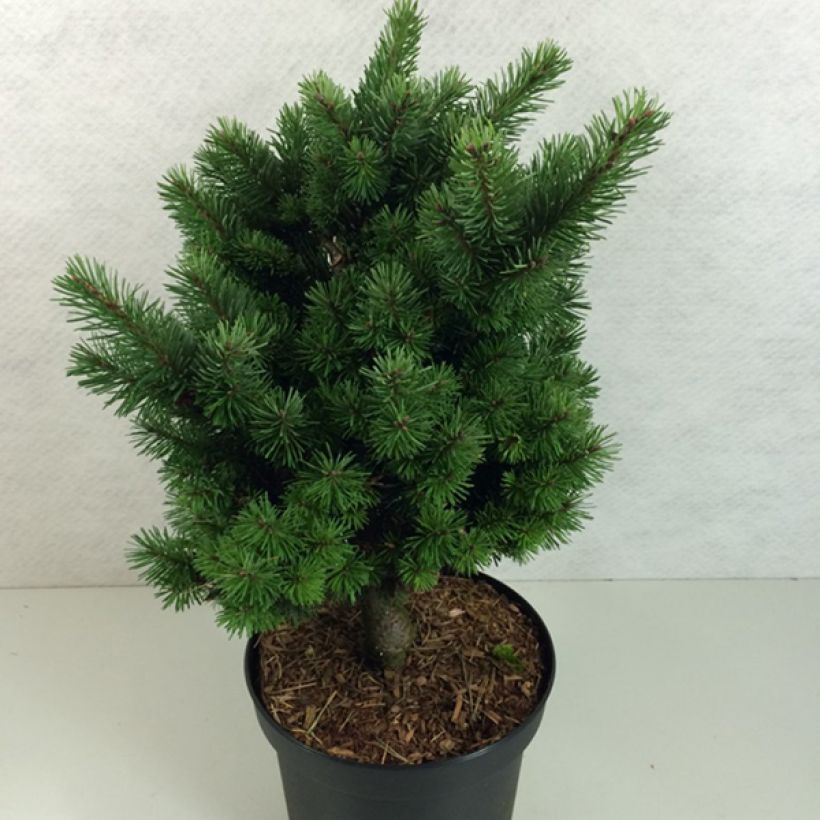

Plant habit
Foliage
Botanical data
Pseudotsuga
menziesii
Pannenhoef
Pinaceae
Douglas Fir, Oregon Pine, Green Douglas Fir, Douglas Spruce
Cultivar or hybrid
Other Evergreen shrubs
Planting and care
Pseudotsuga menziesii 'Pannenhoef' should be planted from September to November and from February to June in deep, light, well-drained soil, neutral or slightly acidic and fertile. It prefers loose and humus-rich soils which are not very chalky. Choose a sunny, open spot. Soak the rootball well before planting. Add organic fertiliser at planting and water generously for the first three years, and in case of prolonged drought. In poor soil, you can apply a special conifer fertilizer every 2 years in April. Weed the soil in summer. This very hardy conifer (down to at least -20°C (1°F)) dislikes waterlogged, heavy and compact soils, alkaline and dry in summer. Pruning is not necessary. However, to accentuate the compact habit of this bush, you can shorten shoots that are too vigorous immediately above a bud in May-June.
Planting period
Intended location
Care
This item has not been reviewed yet - be the first to leave a review about it.
Haven't found what you were looking for?
Hardiness is the lowest winter temperature a plant can endure without suffering serious damage or even dying. However, hardiness is affected by location (a sheltered area, such as a patio), protection (winter cover) and soil type (hardiness is improved by well-drained soil).

Photo Sharing Terms & Conditions
In order to encourage gardeners to interact and share their experiences, Promesse de fleurs offers various media enabling content to be uploaded onto its Site - in particular via the ‘Photo sharing’ module.
The User agrees to refrain from:
- Posting any content that is illegal, prejudicial, insulting, racist, inciteful to hatred, revisionist, contrary to public decency, that infringes on privacy or on the privacy rights of third parties, in particular the publicity rights of persons and goods, intellectual property rights, or the right to privacy.
- Submitting content on behalf of a third party;
- Impersonate the identity of a third party and/or publish any personal information about a third party;
In general, the User undertakes to refrain from any unethical behaviour.
All Content (in particular text, comments, files, images, photos, videos, creative works, etc.), which may be subject to property or intellectual property rights, image or other private rights, shall remain the property of the User, subject to the limited rights granted by the terms of the licence granted by Promesse de fleurs as stated below. Users are at liberty to publish or not to publish such Content on the Site, notably via the ‘Photo Sharing’ facility, and accept that this Content shall be made public and freely accessible, notably on the Internet.
Users further acknowledge, undertake to have ,and guarantee that they hold all necessary rights and permissions to publish such material on the Site, in particular with regard to the legislation in force pertaining to any privacy, property, intellectual property, image, or contractual rights, or rights of any other nature. By publishing such Content on the Site, Users acknowledge accepting full liability as publishers of the Content within the meaning of the law, and grant Promesse de fleurs, free of charge, an inclusive, worldwide licence for the said Content for the entire duration of its publication, including all reproduction, representation, up/downloading, displaying, performing, transmission, and storage rights.
Users also grant permission for their name to be linked to the Content and accept that this link may not always be made available.
By engaging in posting material, Users consent to their Content becoming automatically accessible on the Internet, in particular on other sites and/or blogs and/or web pages of the Promesse de fleurs site, including in particular social pages and the Promesse de fleurs catalogue.
Users may secure the removal of entrusted content free of charge by issuing a simple request via our contact form.
The flowering period indicated on our website applies to countries and regions located in USDA zone 8 (France, the United Kingdom, Ireland, the Netherlands, etc.)
It will vary according to where you live:
- In zones 9 to 10 (Italy, Spain, Greece, etc.), flowering will occur about 2 to 4 weeks earlier.
- In zones 6 to 7 (Germany, Poland, Slovenia, and lower mountainous regions), flowering will be delayed by 2 to 3 weeks.
- In zone 5 (Central Europe, Scandinavia), blooming will be delayed by 3 to 5 weeks.
In temperate climates, pruning of spring-flowering shrubs (forsythia, spireas, etc.) should be done just after flowering.
Pruning of summer-flowering shrubs (Indian Lilac, Perovskia, etc.) can be done in winter or spring.
In cold regions as well as with frost-sensitive plants, avoid pruning too early when severe frosts may still occur.
The planting period indicated on our website applies to countries and regions located in USDA zone 8 (France, United Kingdom, Ireland, Netherlands).
It will vary according to where you live:
- In Mediterranean zones (Marseille, Madrid, Milan, etc.), autumn and winter are the best planting periods.
- In continental zones (Strasbourg, Munich, Vienna, etc.), delay planting by 2 to 3 weeks in spring and bring it forward by 2 to 4 weeks in autumn.
- In mountainous regions (the Alps, Pyrenees, Carpathians, etc.), it is best to plant in late spring (May-June) or late summer (August-September).
The harvesting period indicated on our website applies to countries and regions in USDA zone 8 (France, England, Ireland, the Netherlands).
In colder areas (Scandinavia, Poland, Austria...) fruit and vegetable harvests are likely to be delayed by 3-4 weeks.
In warmer areas (Italy, Spain, Greece, etc.), harvesting will probably take place earlier, depending on weather conditions.
The sowing periods indicated on our website apply to countries and regions within USDA Zone 8 (France, UK, Ireland, Netherlands).
In colder areas (Scandinavia, Poland, Austria...), delay any outdoor sowing by 3-4 weeks, or sow under glass.
In warmer climes (Italy, Spain, Greece, etc.), bring outdoor sowing forward by a few weeks.

































